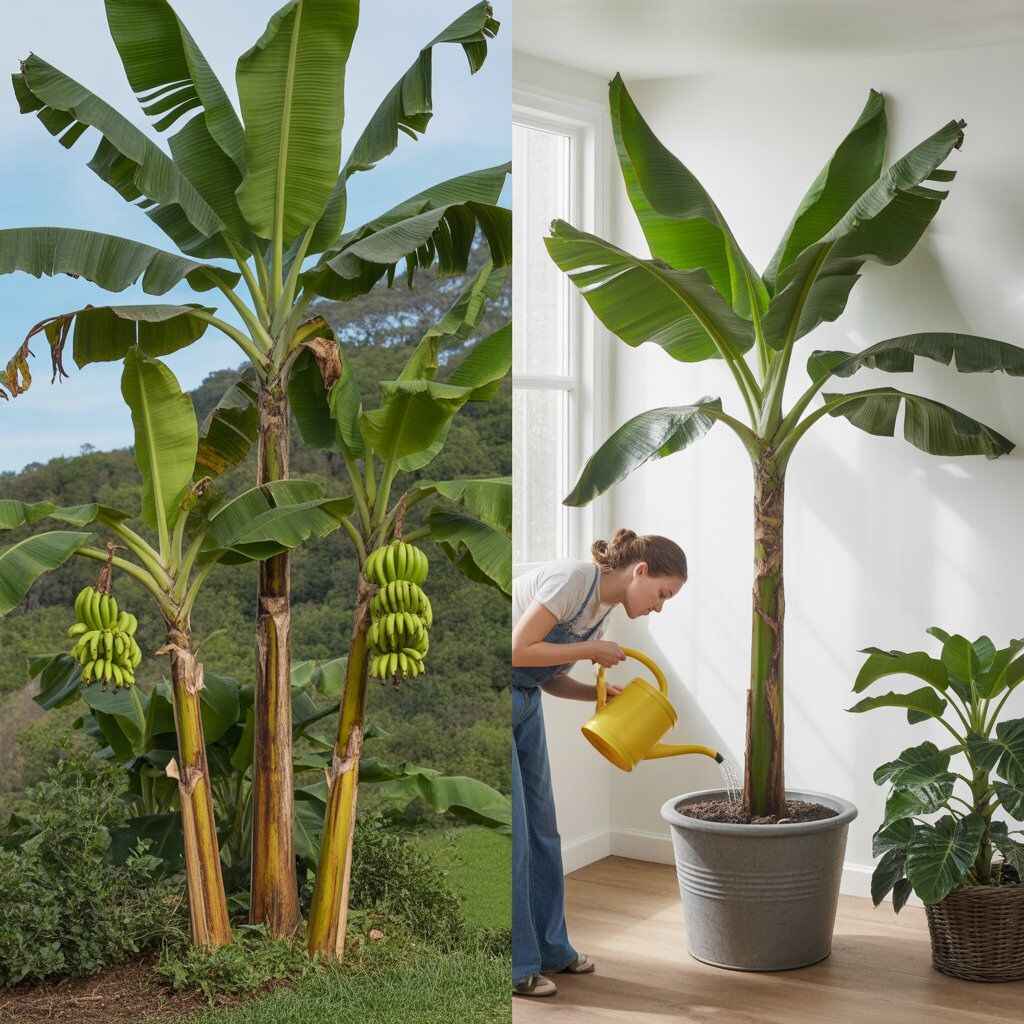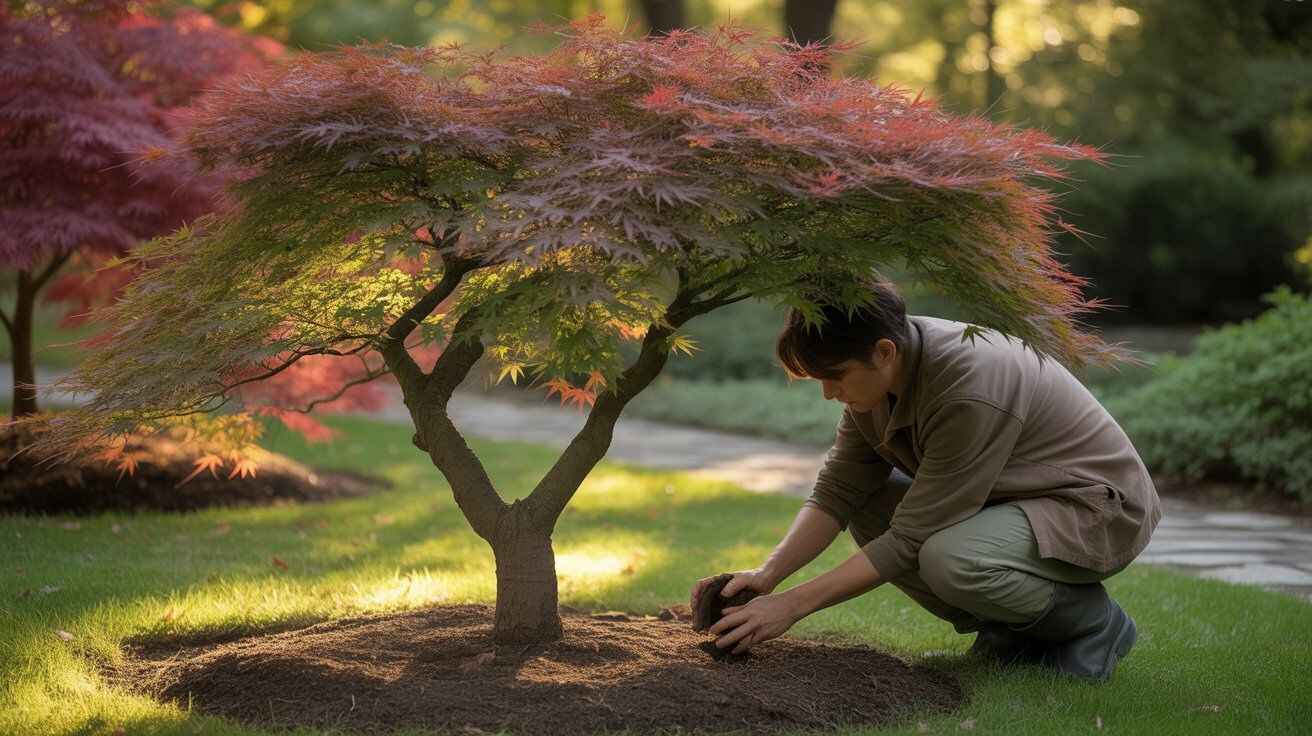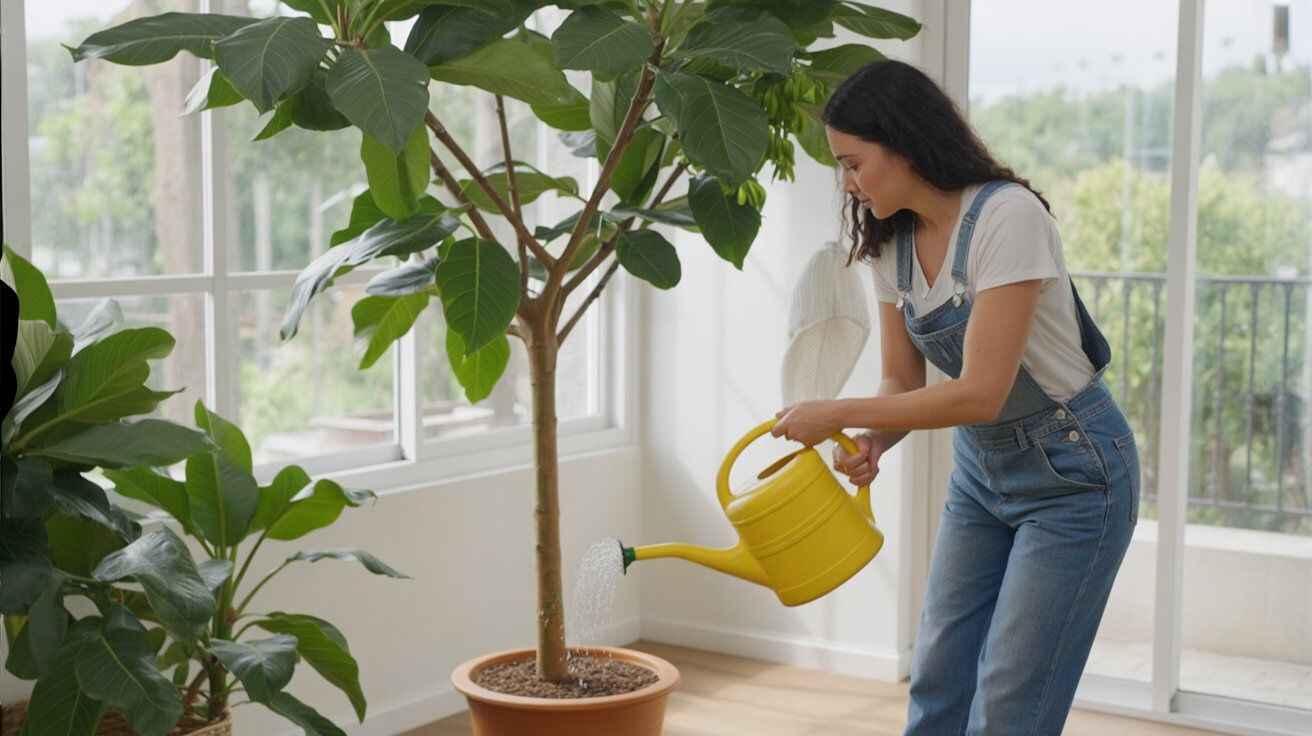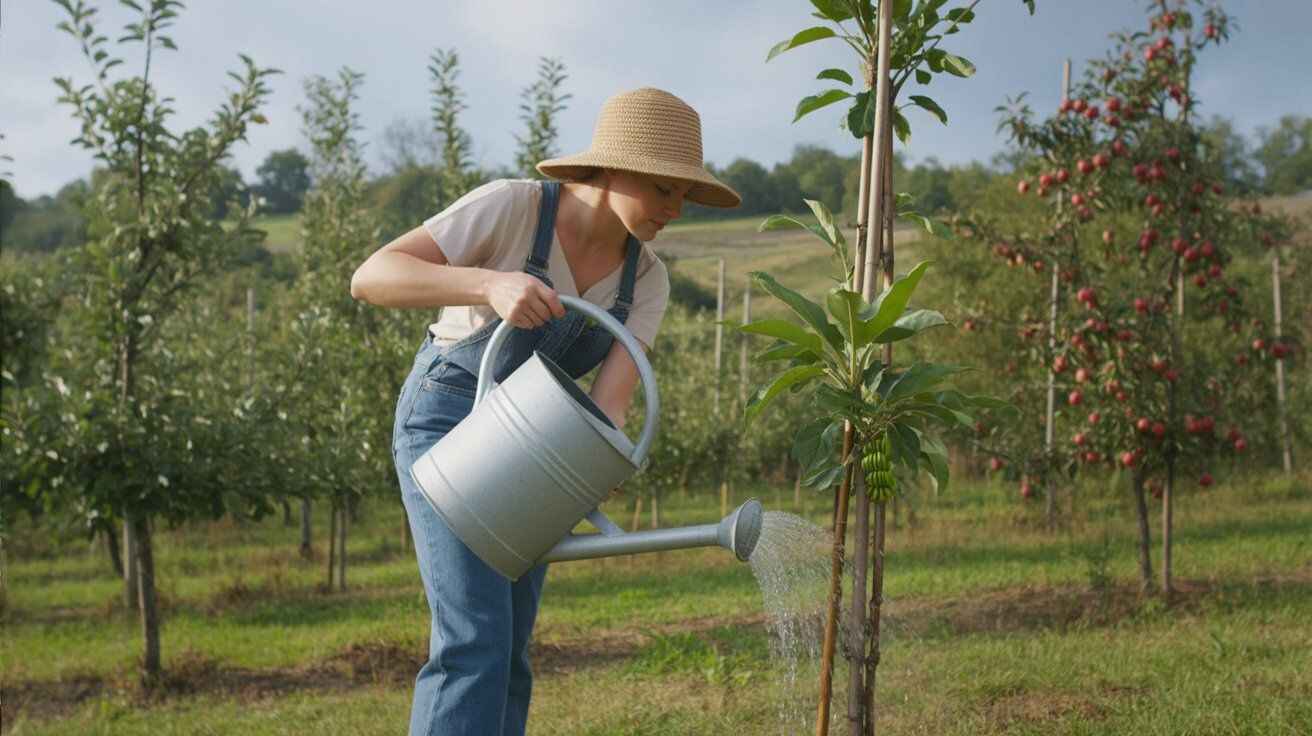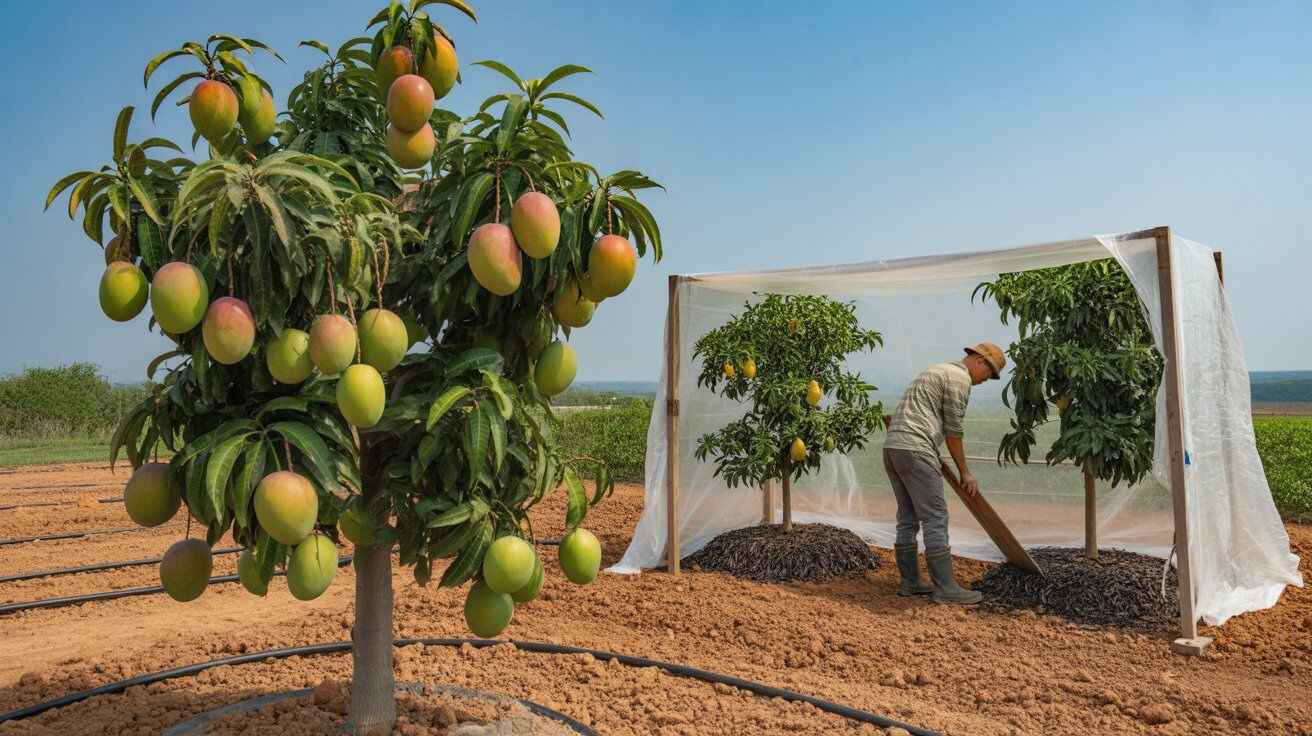Yes, you can grow a banana tree. With proper variety, soil, light, water, and care, they thrive in pots, gardens, or cooler climates.
Who this banana tree guide is for
This guide is for gardeners wondering if they can grow a banana tree at home. In tropical or subtropical zones, you can grow banana trees outdoors for fruit. In cooler regions, focus on container gardening and indoor care with dwarf varieties like Cavendish or Musa basjoo. Whether for fruit, ornament, or experimentation, these steps will help you succeed.
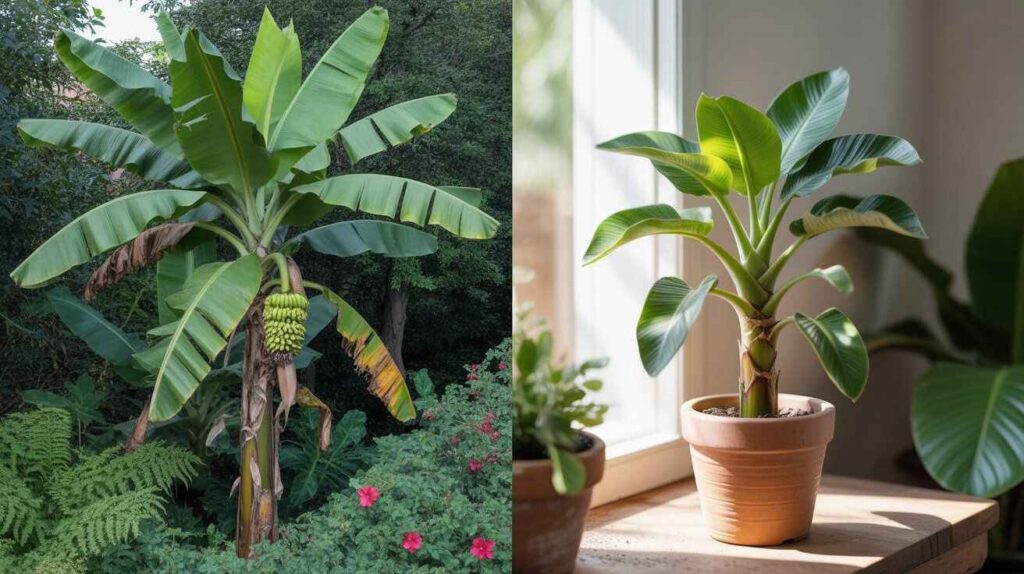
Best climates & USDA zones for banana trees
| Climate / Zone | Suitable Varieties | Growth Potential | Special Care Tips |
|---|---|---|---|
| USDA Zones 9–11 (Tropical & Subtropical) | Most edible bananas (Cavendish, Lady Finger, etc.) | 🌴 Full size, reliable fruiting | Regular watering, full sun, frost protection rarely needed |
| USDA Zone 8 (Mild Winters) | Cold-hardy bananas (e.g., Musa basjoo) | 🌱 Moderate size, fruiting rare | Heavy mulch in winter, protect rhizome from frost |
| USDA Zone 7 & Below (Cooler Regions) | Container-grown bananas | 🍃 Limited growth, mostly ornamental | Grow in pots, move indoors during winter, ensure bright sunlight |
| General Requirements | All banana varieties | — | Warmth, humidity, fertile soil, and consistent moisture are essential |
Which banana variety should you choose?
Choosing the right banana variety is key to success. Dwarf Cavendish suits containers, Musa basjoo survives light frost, and Lady Finger or Red thrive in warm zones. Match variety to climate and space for healthier growth and better fruiting.
Planting in-ground or in containers — pros & cons
Planting bananas in the ground gives stronger roots, faster growth, and better fruiting in warm climates but also exposes them to frost and wind. Containers offer flexibility — move plants indoors or into sunlight. Use large, well-drained pots. Though bunches may be smaller, container bananas are practical for beginners and non-tropical gardeners.
Soil, drainage and step-by-step planting
Banana trees grow best in fertile, well-drained soil with a pH of 5.5–6.5.Add compost or manure for rapid growth and mulch to retain moisture.In rainy areas, plant on mounds to prevent waterlogging.Good soil preparation ensures strong pseudostems and healthy roots.
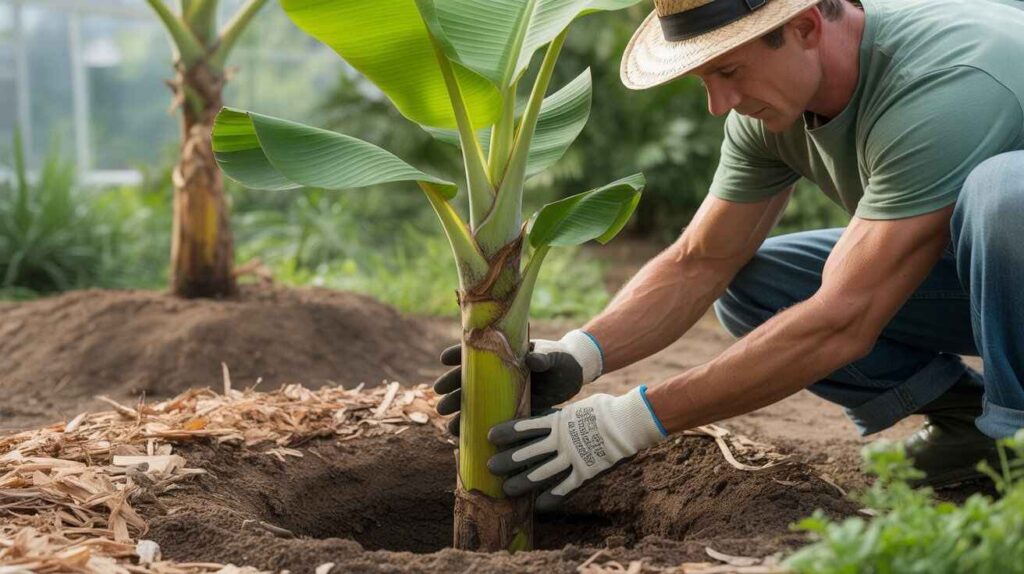
How often to water a banana tree
Banana trees need consistent moisture for fast leaf and stem growth. In warm weather, water 2–3 times per week, keeping soil moist but not soggy. Containers may need daily checks as pots dry faster. Overwatering leads to root rot, while underwatering causes yellow leaves and stunted growth. A steady watering schedule keeps the pseudostem strong and growth active.
Feeding your banana tree: fertilizer & timing
Banana trees need heavy feeding for strong growth and fruiting. Use a potassium-rich fertilizer every 2–4 weeks in the growing season. Add compost or manure to boost soil health. Consistent feeding ensures lush leaves, steady sucker growth, and flavorful bananas.
Light, temperature and humidity requirements
Banana trees need 6–8 hours of direct sunlight daily. They prefer warm temperatures (75–95°F / 24–35°C) and stop growing below 55°F (13°C). High humidity (50–70%) supports healthy leaves, especially indoors. In dry areas, misting or a humidifier prevents browning. Light, warmth, and humidity together create the tropical conditions banana trees need to thrive.
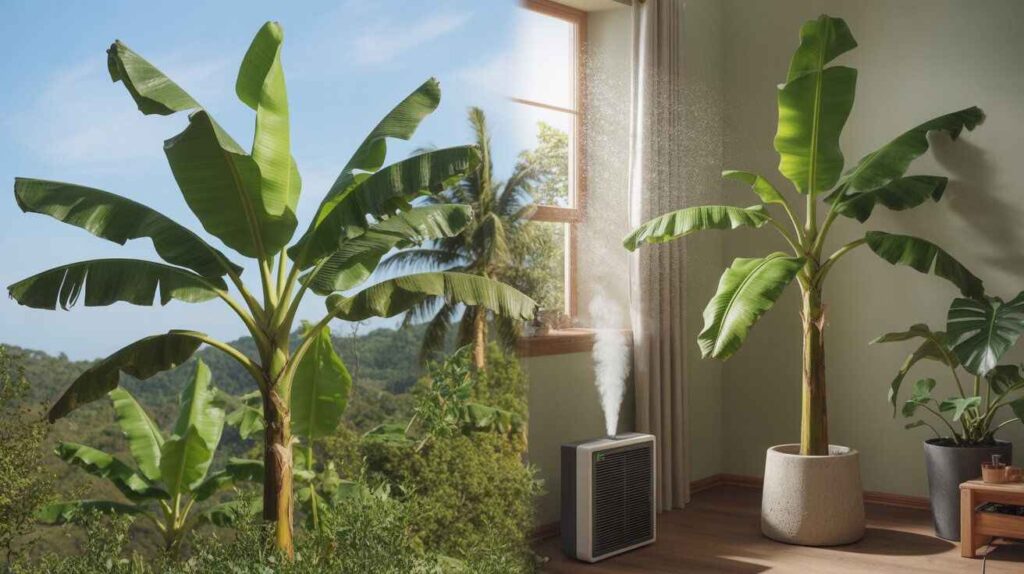
How to propagate banana plants (suckers, pups & tissue culture)
Banana trees don’t grow from store-bought bananas because they are seedless. They are propagated through suckers (pups) at the plant’s base. Choose healthy 3-foot pups with strong roots and separate them from the rhizome to replant. For farms, tissue culture provides disease-free, uniform plants, while pups are best for home gardeners..
Common pests and diseases (and how to fix them)
Banana trees face pests like mealybugs, aphids, and scale that weaken growth. Control them with insecticidal soap or oil. Root rot and Panama disease can be prevented with good drainage, crop rotation, and resistant varieties. Wind may shred leaves but rarely harms growth. Regular care keeps banana trees healthy and productive.
When will my banana tree fruit? Timeline & tips
Yellow leaves usually mean overwatering, poor drainage, or nutrient deficiency. Check the soil and apply a potassium-rich fertilizer. No fruit? The plant may be too young, stressed by cold, or not getting enough sunlight. Container bananas need large pots for healthy roots. Pests like aphids or mealybugs can be managed with neem oil. Early care ensures your banana tree stays healthy and productive.
Growing bananas indoors or in cool climates
Yellow leaves often signal overwatering, poor drainage, or nutrient deficiency. Check soil and use a potassium-rich fertilizer.Lack of fruit may result from young age, cold stress, or low sunlight. Container bananas need large pots for healthy roots. Control pests like aphids or mealybugs with neem oil. Early care keeps banana trees healthy and productive.
Quick troubleshooting: yellow leaves, no fruit, pests
Yellow leaves signal overwatering, poor drainage, or nutrient deficiency. Use a potassium-rich fertilizer to correct imbalances .Lack of fruit is often due to young age, cold, or low sunlight. Container bananas need large pots for strong growth .Pests like aphids or mealybugs can be controlled with neem oil. Proper early care keeps banana trees healthy and productive.
FAQs About Growing Banana Trees
Q1: Can I grow a banana tree indoors?
Yes. Choose dwarf banana tree varieties like Dwarf Cavendish, place them in large pots with good drainage, and provide 6–8 hours of light daily. Extra humidity helps prevent leaf browning.
Q2: How long does it take for a banana tree to fruit?
Most fruiting varieties produce bunches within 9–15 months in warm zones. Indoor or container-grown trees may take longer or remain ornamental if light and warmth are limited.
Q3: Can I grow a banana tree from a store banana?
No. Commercial bananas are seedless, so they won’t sprout. Instead, grow from pups (suckers) separated from a parent plant or purchase a nursery-started banana tree.
Q4: What fertilizer works best for banana trees?
A balanced fertilizer with extra potassium supports strong pseudostems and fruit. Combine with compost or manure for better soil health and steady nutrient supply.
Q5: How do I protect banana trees from frost?
In cold regions, mulch heavily around the rhizome, wrap the pseudostem, or move container plants indoors before temperatures drop below 55°F (13°C).
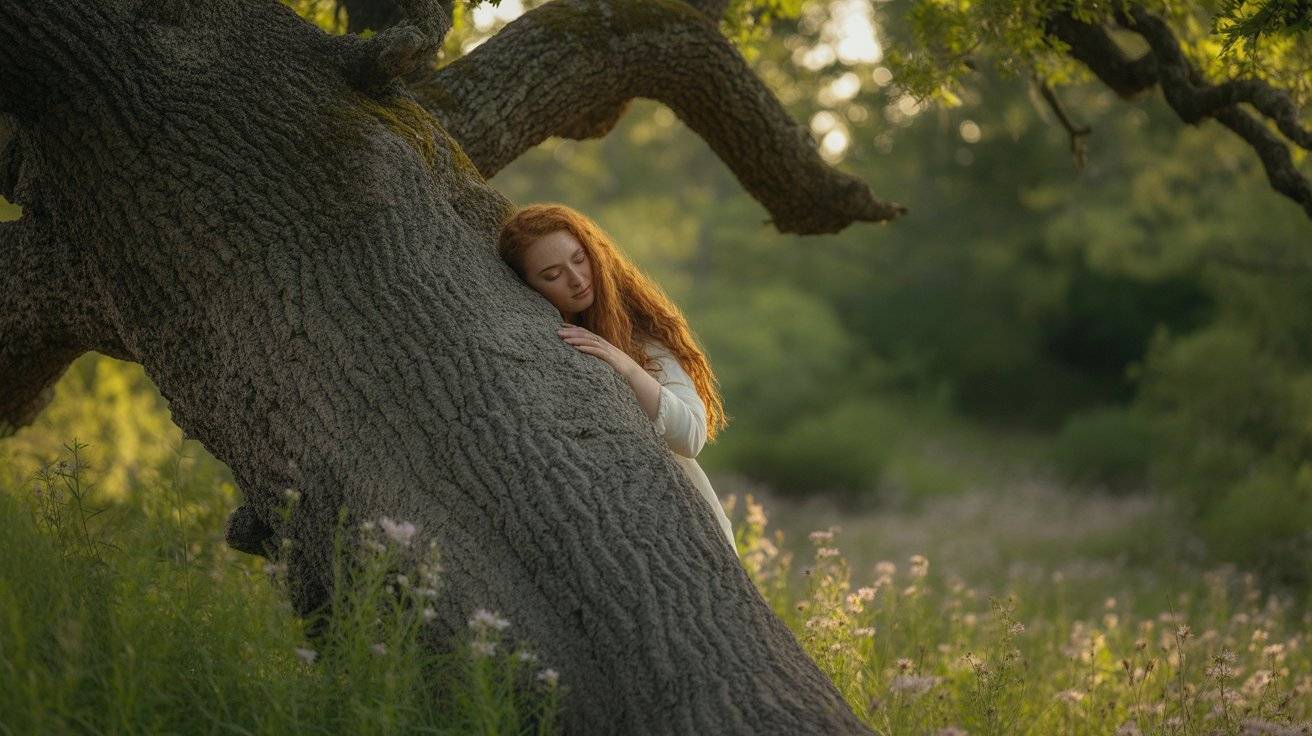
Jhanzaib Khan, with over 50 years of dedication to nature and tree conservation, is a leading authority in the world of trees and environmental care. From his early years exploring forests to guiding communities in sustainable tree planting, Jhanzaib has combined hands-on experience with a lifelong passion for the environment. He specializes in tree species identification, tree care, forest management, and environmental awareness. His insights have been featured in multiple nature blogs, workshops, and local conservation projects.

